by Mary Salinas | Jul 11, 2018
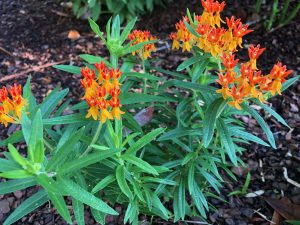
Butterfly Weed – Photo courtesy Mary Salinas
Butterfly weed, Asclepias tuberosa, has been gaining in popularity in the perennials market as it attracts adult butterflies to feed on its nectar and monarch caterpillars to feed on its leaves. Gardeners are also turning to use more Florida native plants in their landscapes.
Independent or native nurseries tend to be the best source for plants but the supply can be quite limited. There are more sources for seed, though, online. Try to purchase seed from a local or Florida grower as those seeds will be better adapted to our climate.
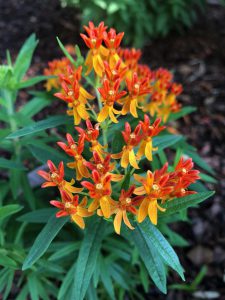
Butterfly Weed – Photo courtesy Mary Salinas
When growing butterfly weed from seed, transplant your new plants into their garden spot when they are still quite young, 2-3” tall, as they will be more successful in getting them established. Choose your planting location wisely. Once you plant it in a particular area, don’t move it. They are finicky about being moved from spot to spot.
For more information:
Monarch Butterfly
Asclepias tuberosa Butterfly Weed, Indian Paintbrush
Florida Wildflower Foundation
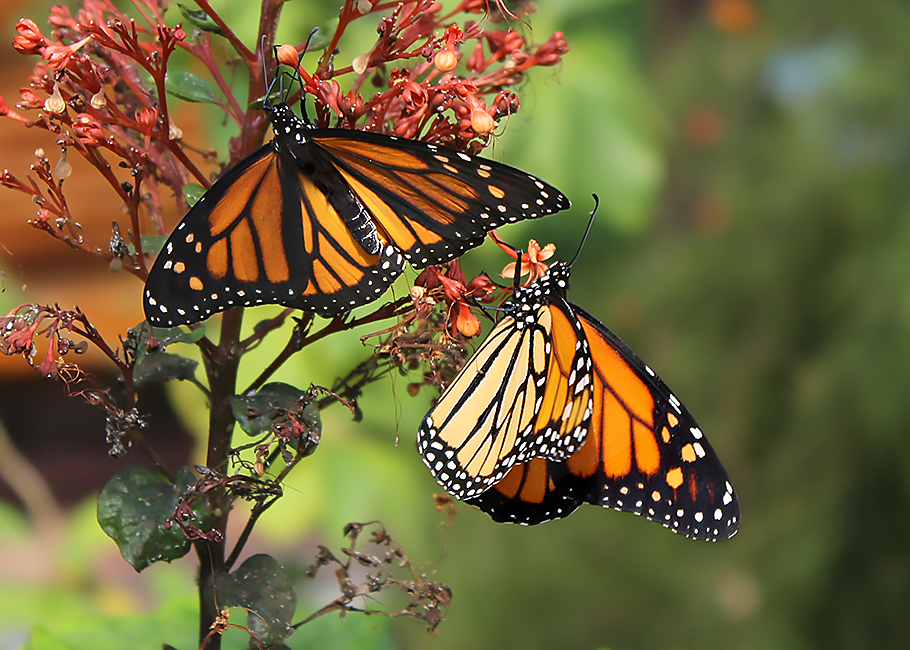
by Mary Salinas | Dec 14, 2017
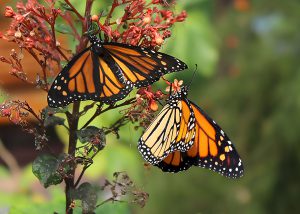
Monarch butterflies. Photo credit: Pia-Riitta Klein.
We have grown to love monarch butterflies, with their striking orange and black markings and their fascinating annual migration from southern Canada 3,000 miles south to Mexico. To help them, we have increasingly planted milkweed, the only plant on which their caterpillars will feed. In northwest Florida, the milkweed species most planted has been tropical milkweed, Asclepias curassavica, as it is lush, showy and easy to grow.
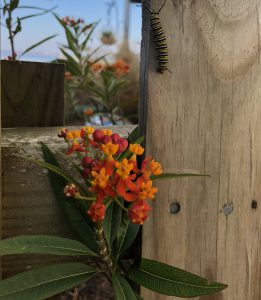
Tropical milkweed, Asclepias curassavica, was visited by this monarch caterpillar who is now off to find a suitable place to make his transformation into a chrysalis. Photo by Mary Salinas, UF/IFAS Extension.
Tropical milkweed, unlike our native milkweeds that die back in late fall, will continue to grow through the winter unless killed by a hard freeze. Even if the cold kills the stems, it may regrow quickly from the roots. This seems like an advantage, but maybe not. The availability of a host plant for the caterpillars may be prompting adult females to stay and lay eggs rather than migrate south and be protected from deadly freezes.
Experts are also exploring links between the longer persistence of the tropical milkweed into winter and a build-up on those plants of a serious parasite Ophryocystis elektroscirrha, commonly referred to as OE.
So, what is the answer?
- Cut back any tropical milkweed to the ground at Thanksgiving. That may encourage female monarchs to migrate and prevent a deadly build-up of OE spores on the plants.
- Consider adding some native milkweed species to your butterfly garden. Here are some recommended species from Dr. Jaret Daniels:
- Aquatic Milkweed (Asclepias perennis)
- Swamp Milkweed (Asclepias incarnata)
- Pinewoods Milkweed (Asclepias humistrata)
- Redring Milkweed (Asclepias variegata)
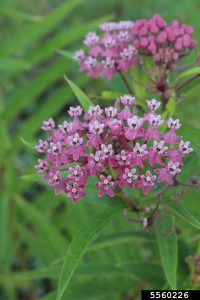
Swamp Milkweed, Asclepias incarnata. Photo credit: Chris Evans, University of Illinois.
For more information:
Are non-native milkweeds killing monarch butterflies?
Monarch Joint Venture: Potential risks of growing exotic (non-native) milkweeds for monarchs
Monarch Butterfly, Danaus plexippus Linnaeus (Lepidoptera: Nymphalidae: Danainae)
MonarchWatch.org
Gardening Solutions: Milkweed
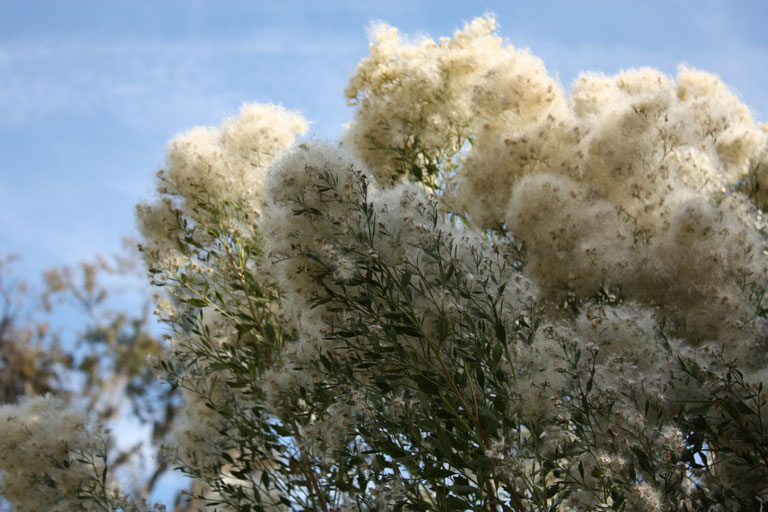
by Mark Tancig | Nov 16, 2016
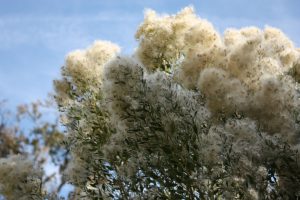
Female saltbush plant in bloom. Credit: Niels Proctor, hort.ifas.ufl.edu
If you have noticed bursts of white-flowered shrubs along roadsides, trails, and other natural areas the last couple of weeks, there’s a good chance that it was saltbush (Baccharis halimifolia). Saltbush is a native shrub in the sunflower or daisy family (Asteraceae) that can be found throughout the Coastal Plain. It often grows along the edges of freshwater and brackish water wetlands, but also seems happy in upland sites as well. It prefers sunny sites and can reach a height of ten to fifteen feet. There are separate female and male plants of this species, with females having the showy, white blooms while males are somewhat plain.
While it can be quite common in natural areas, it is rarely seen in the home landscape. Although saltbush is a somewhat leggy shrub, its home landscape value comes from the fact that it blooms at a time when most other plants are done blooming or are going into dormancy. In addition to its show of white flowers at a time when many other landscape plants are becoming drab, saltbush is also an important nectar source for migrating monarch butterflies. It is also tolerant of salt spray, so makes a good addition to the landscape in coastal areas.
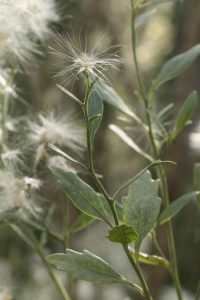
Leaves and seed of saltbush. Credit: Niels Proctor, hort.ifas.ufl.edu
Saltbush may be hard to find in the retail nursery trade, but can often be sourced from nurseries that specialize in native plants or ecosystem restoration plantings. There are male and female plants, so when purchasing, you may want to see it in bloom to verify that you picked a female. If you know someone with saltbush on their property, you can start some on your own by collecting seed or propagating it through soft or hardwood cuttings.
If you would like to try out an underused, native shrub that provides great late fall color and helps feed monarch butterflies for their journey home, plant a saltbush in your landscape. You may have neighbors asking about that unusual, but pretty, shrub.
More information can be found at Baccharis halimifolia Salt Bush, Groundsel Bush









